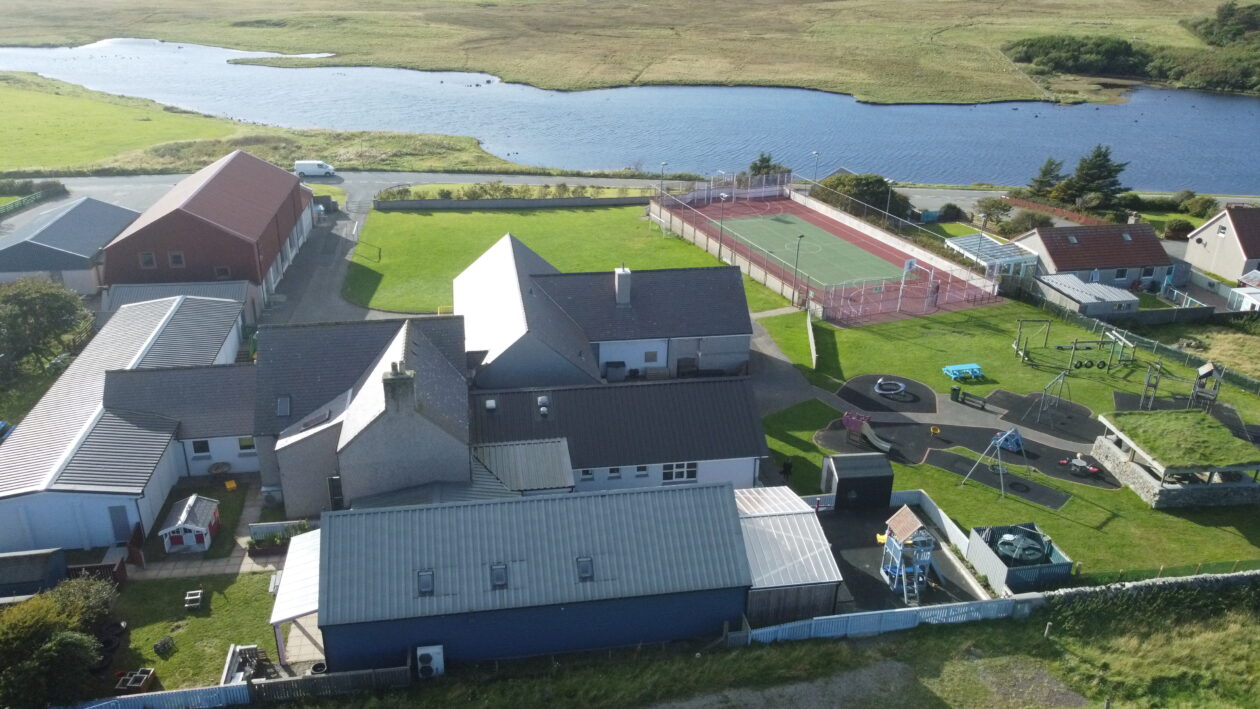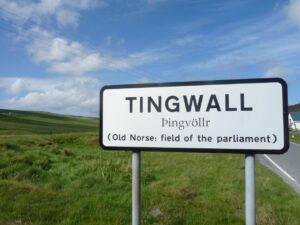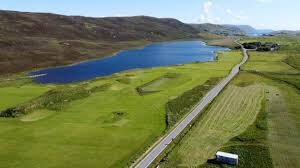The name Tingwall is from ON Þingvöllr (field of the parliament). This is the ancient heart of Shetland, and it was at Law Ting Holm, an islet at the northern end of the Loch of Tingwall that the Norse held their annual Ting (Alting) or parliament. This islet was once entirely surrounded by water and accessed by a stone causeway. In the 1850s the level of the loch was lowered, and the holm took on its present form.
If you are keen on walking, the chain of hill lochs to the west of Tingwall makes an enjoyable day out. There are fine walks and good views of Dales Voe and north from the Califf and Braewick areas.
Asta Golf Club’s nine-hole course, lying between the road and the lochs, is open to visitors and small groups. The clubhouse is also the venue for fortnightly musical evenings throughout the year.
Tingwall Airport is the base for regular inter-island flights to the outer isles such as, Fair Isle & Foula. Flight operators Airtask also offer short airborne sight-seeing trips.
Tingwall Primary School has a catchment area which includes Wadbister, Girlsta and Griesta. Tingwall is a thriving community and its close proximity to Lerwick (6 miles) and recent housing development, has brought many young families into the area.
The School Playground area is open to the public out with school hours. No dogs are allowed in the playground at any time.
The Tingwall Public Hall, adjacent to the school, is regularly used by both the school and the wider community.
It is used by the school for PE and concerts and is used for various other events such as; the Scalloway Fire Festival, Youth Clubs, Sunday Teas, Box-fit, Mothers and Toddlers groups, SWRI, knitting groups, plant sales, weddings and birthday parties and numerous live music and charity events.
Useful Links:
Shetland Museum & Archives | Home
Ferry to the Orkney and Shetland islands | NorthLink Ferries
Cultural Heritage | Shetland Heritage
Tingwall, Whiteness and Weisdale Community Council






